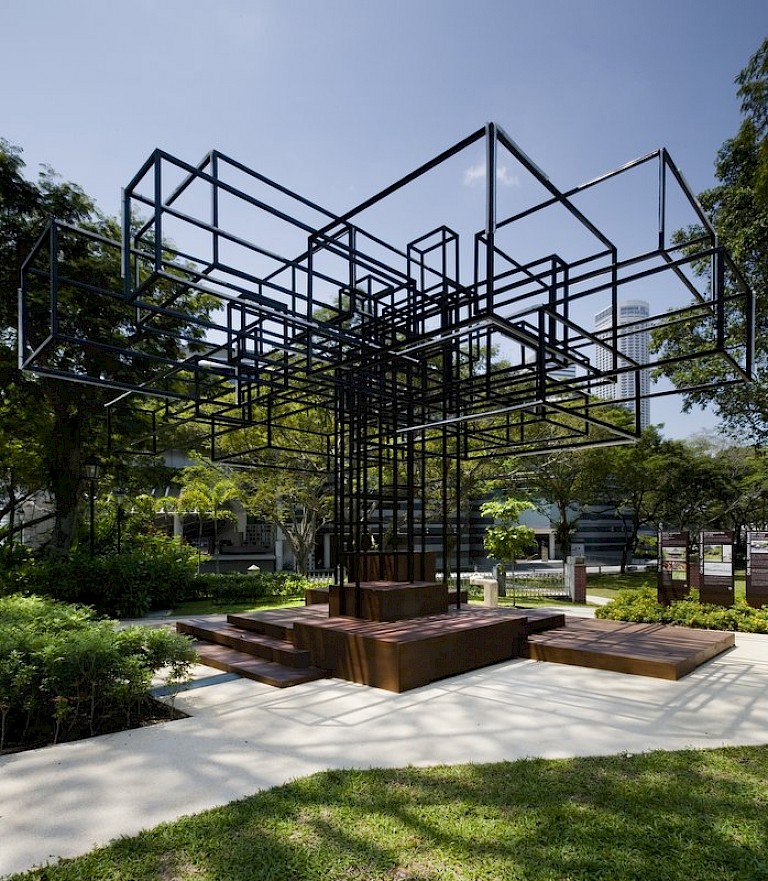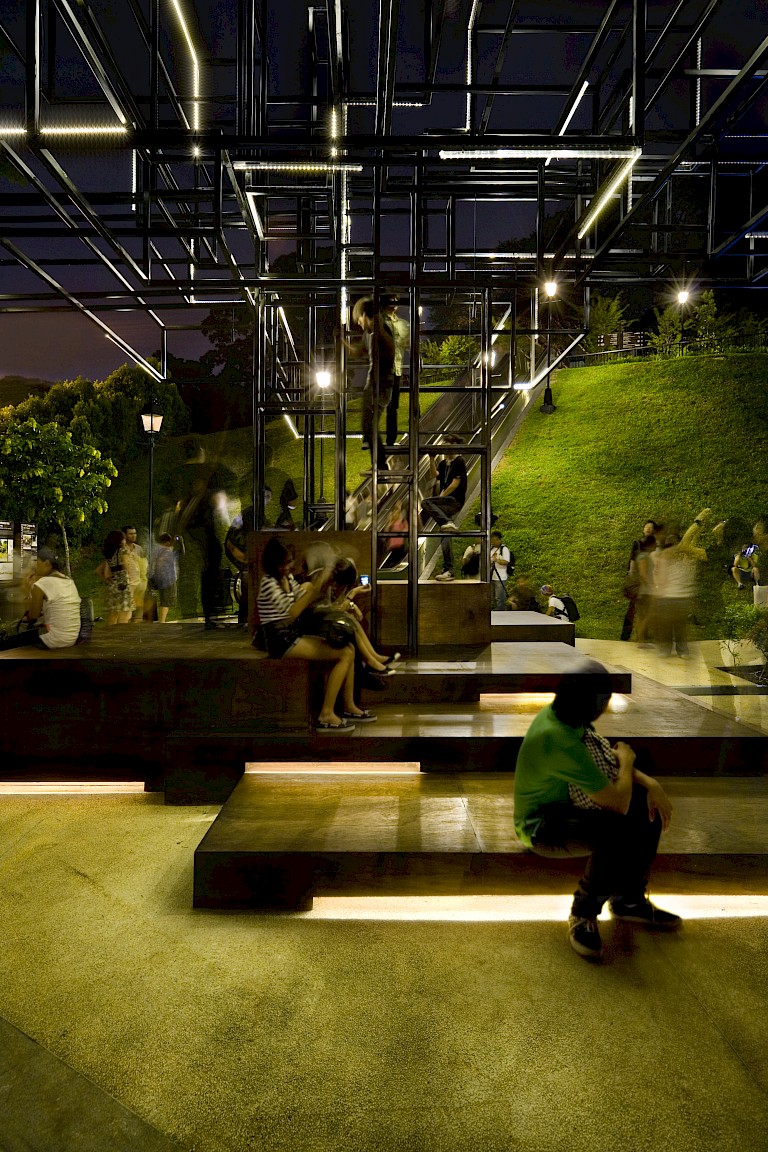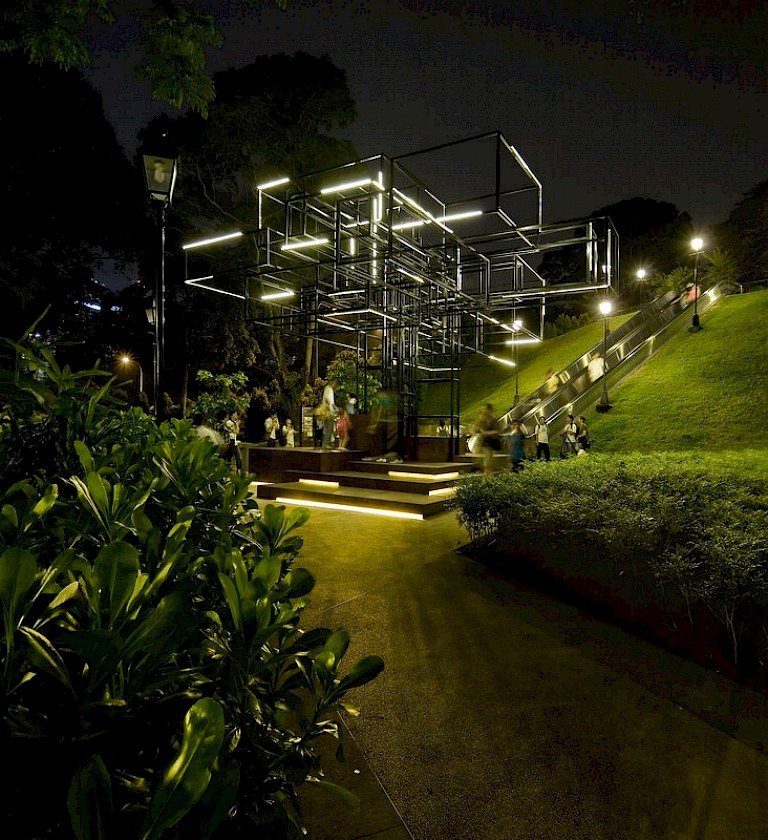



A tiny republic of just over 700 square kilometers, Singapore is a rich ethnic and social stew and buzzing, dynamic, globalised urban hub that comes alive at night. Responding to the nocturnal culture of the city-state but also creating a deeper, more spiritual dimension and metaphor, The Tree lets Singaporeans connect to their social and local history. Though its form may be urban, contemporary, and angular, the sculpture unfolds many layers rich with meaning and nuance.
According to its design statement, FARM was inspired by “the huge old Banyan tree that sits majestically on the museum’s front lawn, seemingly holding fort to a place full of histories, stories and magic.” For Singapore locals, the connections between The Tree and a Banyan would instantly be recognizable. Banyan trees figure prominently in Asian and Pacific religions and myths and are sacred in South Asia, particularly to Hindus and Buddhists.
The shape of the giant tree is unmistakable, it has a majestic canopy with aerial roots running from the branches to the ground. With age, such roots can become indistinguishable from the main trunk, leading to the tree becoming a metaphor for renewal, or eternal life. The Banyan has a history of bringing people together. In many traditional societies the tree is used as a meeting spot or a marker for the center of the village and many activities take place around its trunk. The tree’s form also inspires allegorical symbolism; its numerous arterial roots are seen as a symbol of religious or cultural unity—one entity with many far-flung roots.
Evoking the powers of the mythical Banyan tree, FARM has not only created a contemplative gathering place for the public, but also one that responds physically to its users and how they interact with each other and their city. With a footprint of 100 square meters, The Tree is a holistic spatial experience that re-invents the familiar in a whole new light. Inspired by and created in the image of an organic natural form, the sculpture alludes to cultural richness and symbolism through a contemporary reading of the Banyan tree. The hypnotic visual landscape the work creates through its form and interactive response creates fresh and evocative connections between a new generation of Singaporeans and their cultural memory. It ceases to be a copy of a tree, but a truth in its own right.
All copyright belongs to Shanghai Academy of Fine Arts, Shanghai University.



